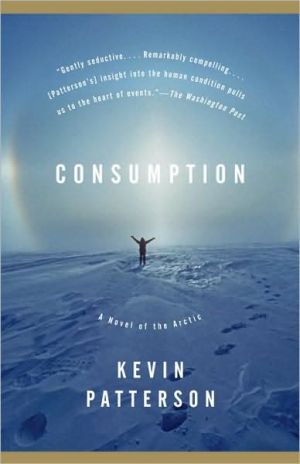

 |

|

The average rating for Consumption based on 2 reviews is 3.5 stars.
Review # 1 was written on 2015-10-31 00:00:00 Antonio Cotten Antonio CottenI find it difficult to write about Consumption. To write about the book easily requires that the book left an impression - whether good or bad - and this one just fell a bit flat. Of course, there are interesting aspects of life in the Canadian Arctic that come to light in the book. Of course, there are stylistic elements that Patterson uses - like the symbolism of consumption in its various meanings - throughout the novel to create the feeling of loss that permeates the novel, in which ideas, history, tradition and people are consumed by the spread of "civilisation". The trouble is, that the book tried to focus on the lives of too many characters to really portray the specific community that is erased by the advance of modern life. The murder mystery that is added in the second half only adds to distract from the point of the novel. |
Review # 2 was written on 2015-11-05 00:00:00 Philip Duncan Philip DuncanAccording to Dictionary.com, consumption is variously defined as 1. the act of consuming or state of being consumed, especially by eating, burning, etc. 2. (economics) expenditure on goods and services for final personal use 3. the quantity consumed 4. (pathol) a condition characterized by a wasting away of the tissue of the body especially as seen in tuberculosis of the lungs In his book Consumption, Kevin Patterson, himself a physician with years of experience in the Arctic and other parts of Canada, uses the word thoughtfully and, ultimately, with all of it's varied meanings. The point of view of the novel is split in many ways but perhaps the chief observers are Victoria, taken from home as a young girl for treatment of her TB during the 1950s. At that time her Inuit family was largely nomadic, only occasionally landing in the sparsely populated towns. She was not to return for many years. And then she would always be just that bit different. She returned to a family living in a house in Rankin Inlet. Secondly, there is Balthazar, the doctor who comes up from way south, actually from the US. He is single, searching or escaping--it's never quite certain--but he stays, off and on for years, seeing the changes in people, families, community, the Inuit, the land, even the wild animals. Around these two characters we see the story of consumption work, the tale of the old wasting disease; the gradual changing of life ways from nomadic to settled and what becomes of families and community, what happens to ancient skills, what occurs when global economics meets small village dreams. It's all here. Along side history of the place, a place most of us will never experience. The people exist along this coast against a backdrop of a half million square miles of tundra, gently rolling treeless plains. In the summer, this land is boggy and moss-bound; in the winter, frozen and blasted lowlands, eskers of rock protruding through shallow snow. The Inuit lived here for ten thousand years, pulling their living from this meager forage until the 1960s, when they accreted in the little government towns built along the coast and left the tundra empty of human inhabitants for the first time since the glacial ice had melted. (pp 6-7) The cost of consumption is large, and not only physical. There are the obvious medical problems but there are also the less obvious emotional and spiritual problems that accompany the other forms of consumption. We also see them around us every day but they are masked by our so aptly named and politically glorified "consumer" society. In Ranklin Inlet we see it begin and grow and fester. But through Patterson's eyes we also see the beauty of the land the resolve of people and attempts to make things better if not fully right. This section written by Balthazar is a beautiful way to summarize the past. What the Inuit were was a miracle. They lived in a land without trees, in houses made of snow. When there was no driftwood to be had, they made sled runners out of frozen fish wrapped together. Their technologies--the qayak and the toggle-headed harpoon and the seal-fat lamps--were the most elegant solutions to the problems of living in this land, and the finest expression of their wit and sense of beauty. What the Inuit are is us. And what they achieved in the Arctic was the clearest expression of human ingenuity and tenacity. They--we-- prospered in the hardest place there is, and achieved magnificence. ( p 254) For those who have read this far, I do want to say that there is also a novel of human beings here; love, jealousy, rivalries, children coping with parents and vice versa. But everyone is dealing with change, change of a huge order, and it impacts all of their lives and actions. Definitely recommended. 4 to 4.5* |
CAN'T FIND WHAT YOU'RE LOOKING FOR? CLICK HERE!!!